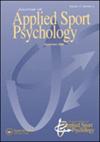在运动心理学服务中管理从业者决策中的脆弱性:回应证据基础
IF 3.2
2区 心理学
Q2 HOSPITALITY, LEISURE, SPORT & TOURISM
引用次数: 0
摘要
摘要本文从双重加工的角度考察了运动心理学从业者的决策。在Kahneman和Tversky工作的基础上,我们利用认知和社会心理学研究来探索运动心理学从业者的关键决策脆弱性。我们研究了经典启发式和偏见的影响,探讨了以下问题:对内部观点的独家关注;井底之蛙侧重于性格而非处境;体育环境是一个复杂的适应系统;成功的公式;相变;把技巧和运气混为一谈。在考虑如何应对这种决策漏洞时,我们探索了Mauboussin开发的一种“违反直觉”的方法来缓解这些漏洞,并解释了运动心理学从业者如何应用这种策略。我们建议采取平衡策略,包括:提高人们对偏见和启发法如何影响我们决策的认识;使我们的观点多样化;积极寻求来自不同来源的关键反馈;创建有用的检查表;以及进行“验尸”。同样,我们探索了未来运动心理学从业者决策研究的策略。 概述:本立场论文借鉴了社会、认知和运动心理学的研究,探讨了运动心理学从业者在决策过程中的关键弱点。我们提供了基于证据的建议来减轻这些脆弱性,以及从业者如何在实践中应用这些想法的策略。对实践的影响双重处理方法在突出和减轻运动心理学从业者的关键决策脆弱性方面具有相当大的潜力。系统地使用循证策略可以大大提高从业者的决策质量。本文章由计算机程序翻译,如有差异,请以英文原文为准。
Managing vulnerabilities in practitioner decision-making within sport psychology services: Responding to the evidence base
Abstract This position paper examines decision-making in sport psychology practitioners from a dual processing perspective. Based on the work of Kahneman and Tversky, we draw upon cognitive and social psychology research to explore key decision-making vulnerabilities in the context of the sport psychology practitioner. We examine the influence of classic heuristics and biases, exploring issues such as: an exclusive focus on the inside view; tunnel vision; focusing on disposition as opposed to situation; the sport environment as a complex adaptive system; formulas for success; phase transitions; and conflating skill and luck. When considering how to combat such decision-making vulnerabilities, we explore a ‘counterintuitive’ approach developed by Mauboussin to mitigating these, and explain how sport psychology practitioners can apply such strategies. We suggest counterweight strategies, including: raising awareness of how biases and heuristics may be affecting our decision-making; diversifying our perspectives; proactively seeking critical feedback from diverse sources; creating useful checklists; and performing ‘pre-mortems’. Likewise, we explore strategies for future research on decision-making in sport psychology practitioners. Lay summary: This position paper draws on research from social, cognitive and sport psychology to explore key decision-making vulnerabilities in the context of the sport psychology practitioner. We provide evidence-based suggestions to mitigate these vulnerabilities, and strategies for how practitioners can apply these ideas in their practice. Implications for Practice A dual-processing approach has considerable potential for highlighting, and mitigating against, key decision-making vulnerabilities in sport psychology practitioners The systematic use of evidence-based strategies could greatly enhance decision-making quality in practitioners.
求助全文
通过发布文献求助,成功后即可免费获取论文全文。
去求助
来源期刊
CiteScore
6.90
自引率
9.40%
发文量
39
审稿时长
>12 weeks
期刊介绍:
The Journal of Applied Sport Psychology (JASP) is a refereed journal designed to significantly advance thought, theory, and research on applied aspects of sport and exercise psychology. Submissions such as experimental studies, qualitative research, correlational studies, case studies, position papers, critical reviews, theoretical developments specific to applied research conducted in sport and/or exercise settings, or having significant applied implications to sport and exercise, are appropriate content for the JASP. Please see the recent Editorial for further details on the aims and scope of the journal. JASP is a non-proprietary journal that is an official publication of the Association for Applied Sport Psychology (AASP). The purpose of AASP is to promote the development of psychological theory, research, and intervention strategies in sport and exercise psychology. The Journal is a direct benefit of membership in AASP and is received by its student and professional members. The publisher of the JASP is Taylor and Francis, Inc. of Philadelphia, PA.

 求助内容:
求助内容: 应助结果提醒方式:
应助结果提醒方式:


